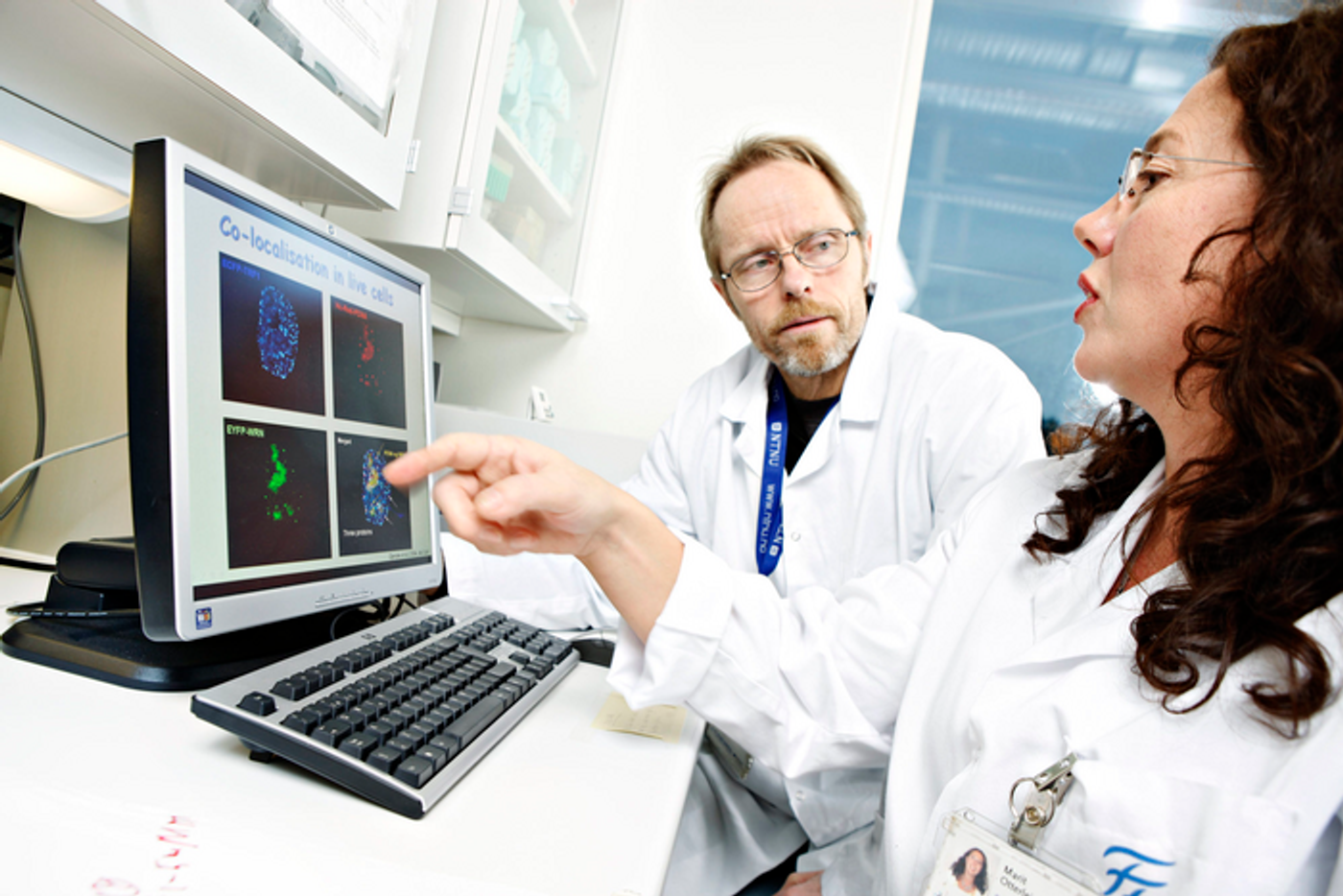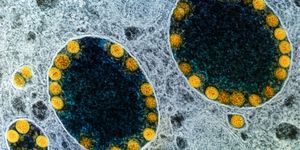Cures Without Big Pharma: Scientist-run company develops hair-saving cancer treatment
After years of effort, a game-changing treatment has emerged from outside the Biopharma sector: a cancer drug that only affects cancerous cells.
Marit Otterlei (center) is a professor at the Norwegian University of Science and Technology. A new cancer drug developed by her, and her colleagues will now be tested in clinical trials in combination with chemotherapy. Image Credit Geir Mogen
Twenty Australians with various types of cancer picked the right clinical trial when they signed up to test a drug called ATX-101. The Phase 1 clinical trial was a resounding success. AXT-101 stopped progressive cancer in its tracks. After less than two months, 70% of those treated were in stable condition. Other study participants witnessed the same positive results with continued treatment. With the growth of their solid tumors halted, it seems clear they received a new lease on life.
Not only does this trial demonstrate the drug is non-toxic to humans, but it alludes to its enormous potential. From here, AXT-101 is off to Phase 2, where it will be put to the test targeting multiple cancer types.
While the exact mechanisms of AXT-101 can only be speculated, the incredible Phase 1 results suggest this drug has the unique ability to leave healthy cells alone.
In more ways than one, this work would not have been possible without the efforts of Marit Otterlei, a professor of molecular medicine at the Norwegian University of Science and Technology (NTNU) in Trondheim, Norway. The fact it was developed outside of the traditional pharmaceutical pipeline is just as impressive as the drug itself.
Billion-dollar pharmaceutical companies say they’re motivated by creating better health and brighter futures, but there’s a big asterisk hanging on the end of those platitudes. No matter what side of the fence you’re on, an undeniable issue with biopharma is that it’s currently our sole way to develop future drugs.
Basic research involves exploring the natural state of a system outside of disease or abnormality. This approach frequently has the side effect of stumbling biological functions essential for understanding disease.
Spending money on basic scientific research is inherently not worth the investment for companies that have no interest in expanding the breadth of human knowledge. This and other risky research hypotheses are primarily left to academic institutes. While sometimes you’ll stumble upon an original research article with a fat “Conflict of Interest” section, for the most part biopharma companies scout and don’t fund the work they build their products off of.
“The pharmaceutical industry doesn’t take on any projects they can’t profit from,” explains Otterlei. “What we develop has to work slightly better than current treatments, and preferably be cheaper to produce and have fewer side effects. Only then can an expensive development run pay off.”
Unfortunately, Otterlei’s work didn’t promise a quick turnaround. “What we’re working on is too long-term for most investors,” she says. For 18 years, her group has laid the groundwork for developing ATX-101 outside the pharmaceutical industry. NTNU and other universities are unable to perform as commercial actors or produce medicine. With no available pharmaceutical industry in Norway, Otterlei founded a company.
ATX-101 is now the primary therapeutic candidate of APIM Therapeutics, a venture-capital financing biotech. She leveraged support from NTNU, venture capital firms, and foundations to make this work possible. "Clinical trials cost anywhere from ten million euros and upwards, and it's extremely difficult to obtain enough funding," says Otterlei. After years of effort, her group is now publishing at successful Phase 1 trial results.
By taking advantage of the unique metabolism of cancer cells, it appears ATX-101 works significantly better than current treatments.
Proliferating cell nuclear antigen (PCNA), a highly conserved protein, is crucial for coordinating cellular machinery throughout eukaryotes. PCNA is a scaffolding protein. You might think of PCNA as a factory space where workers (proteins) can easily come together to create, repair, or destroy various cellular products. The full range of PCNA has yet to be discovered. Previous work pointed towards it is essential for efficient DNA repair. According to a recent publication from Otterlei's group, it also regulates cellular metabolism.
A protein or molecule must have a special sequence to interact with PCNA. Many proteins involved with metabolism bind to PCNA using a motif or sequence called "AlkB homolog 2 protein PCNA interacting motif" (APIM), the namesake of Oterlei's therapeutics company.
Oterlei and colleagues designed ATX-101 as an APIM-containing peptide. It penetrates a cell, binds, and blocks PCNA-protein activity. This has severe effects on cancer cells' ability to handle stress.
"Cancer cells are more stressed than other cells. However, they don't die but continue to grow even when they are damaged," said Oterlei. "Conventional cancer treatment with chemotherapy puts more stress on the cancer cells so that the cells eventually do die," she explains. For some reason, cancer cells love to overexpress PCNA. Interrupting the actions of PCNA presents itself as a new way of stressing out cancer.
AXT-101's miraculous ability is visible to anyone with cancer experience. "Chemotherapy affects all cells, including the normal ones, such as in the hair follicles," explains Otterlei, "and thus affects the whole body with many side effects like hair loss." ATX-101 affects cancer cells exclusively, leaving healthy cells, such as hair follicles, unaffected.
The lock-saving drug can act as a stand-alone treatment or concurrently with other treatments to stop or stabilize cancer growth and metastasis. "The medicine can also help chemotherapy work even better so that you don't have to have so much of it," says Otterlei.
Exactly how this treatment preferentially targets cancer cells is not entirely understood. It could interact with the abundant amount of PCNA cancer cells stuff in their cytosolic space. A unique receptor on natural killer cells interacts directly with PCNA. This connection inhibits the function of the immune system cell. In this way, PCNA is thought to play a role in inhibiting cancer detection. Enzymes with APIM binding sites likely behave differently in cancerous cells, allowing tumor metastasis and migration. But PCNA interacts with over 500 different proteins. Knowing more about it's healthy and cancerous function is necessary to know precisely how APIM-peptides affect its behavior.
The hope is that Phase 2 will further establish the effectiveness of the medication. This work will be conducted in American sarcomas and Australian ovaries concurrent with chemotherapy. "It's been a long run, and there's still a long way to go," says Otterlei.
Sources: Oncogene (1)(2), Journal of Cellular Biology, Journal of Immunology, Expert Option on Drug Discovery









